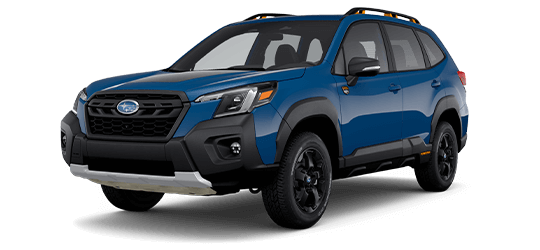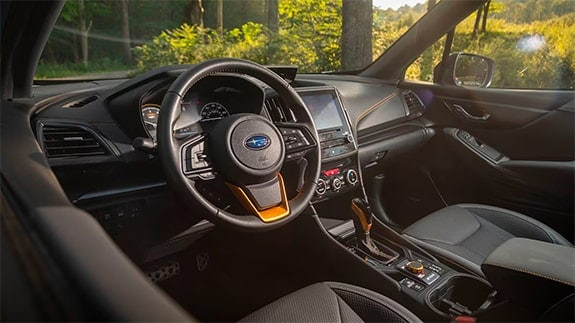6. Contact the seller
Once you find a prospective car, don't run out to see it. Call the seller first. This is to establish a relationship with the seller and verify information about the car. You can ask private-party sellers why they're parting with a car or whether it has any mechanical problems. And if you're buying from a dealer, a phone call or text is the best way to ensure the car is still in stock.
Sometimes the seller will mention something that wasn't in the ad that might change your decision to buy the car. If you want to go deeper, our used car questionnaire is a good reminder of what to ask. You will notice that the last question on our list is the asking price of the car. Although many are tempted to negotiate even before laying eyes on the car, it's better to wait. Once you see it, you can tie your offer to its condition.
If things are going well, set up an appointment to test-drive the car. Try to do it in daylight hours so it's easier to see the car's true condition.
7. Test-drive the car
Test-driving a used car is the best way to know if it's the right one for you. It's also a good way to assess a particular car's condition. So tune out distractions and focus on the car. Here are some things to check:
- Is it easy to get in and out of the car without stooping or banging your head?
- Is there enough headroom, hiproom and legroom? Remember to check the space in the back seat too.
- Is the driving position comfortable? Do you sit too low, too high or just right in the car? Can you tilt or telescope the steering wheel for a better fit?
- Are the seats comfortable? Are they easily adjustable? Is there a lumbar support adjustment for the driver? How about for the front passenger?
- Is the check engine light on? If so, get that problem checked out before buying.
- How is the visibility? Check the rearview mirror and the side mirrors. Look for potential blind spots.
- Use your nose. Do you smell gas, burning oil or anything amiss?
- Check out the tires. How old are they? Is there enough tread left?
- How are the brakes? Are they doing the job of stopping the car? Do they squeak?
- Pop the hood. You don't need to be a car expert to see if something looks wrong. Check around the engine area and inspect lines, hoses and clamps. Wiggle hoses to check the integrity of the rubber. Dried or cracking hoses will need to be replaced, so factor that into your discussions on price. If something is leaking, steaming or covered in oil, it's time to ask questions.
- Does the air conditioning blow cold? Do headlights, brake lights and turn indicators work? Test them to be sure.
After the test drive, ask the owner or dealer if you can see the service records. These will show you if the car has had maintenance performed on time or at regular intervals. Don't be surprised if a private-party seller doesn't have them (or claims not to), and factor that into your negotiation as well.
8. Have the car inspected
If you like the car, consider having a mechanic inspect it before you buy it. If you have a mechanic you know and like, try to arrange to take the car to their shop. In some cases, a mechanic may even accompany you to look at the car (just know that the mechanic probably can't do as comprehensive an inspection as at their shop, with their tools, car lift and lighting). A prepurchase inspection costs $100-$200 and can alert you to problems you may not find yourself. It's a smart investment if you're serious about a car.
A private-party seller will usually let you have the car inspected without much resistance if you're closing in on a deal. But not every seller is comfortable handing the keys to a stranger. One possible compromise is to have the seller meet you at the mechanic of your choice. If the person balks, it could be a sign of deeper mechanical issues, or perhaps the seller can't be bothered. A prepurchase inspection typically only takes about an hour or less.
Most dealerships will let you borrow a car for an outside mechanic to inspect. You'll be paying for the inspection, of course. If it is a CPO car, there's already been an inspection and the car has a warranty, so there is less of a reason to take it to an independent mechanic.
9. Negotiate a good deal
Does the idea of "talking numbers" fill you with dread? It shouldn't. Negotiating doesn't have to be a drawn-out traumatic experience. If you are reasonable and have a plan, chances are you can make a deal pretty quickly and easily. Decide ahead of time how much you're willing to spend to get the car. But don't start the discussion with this number.
Make an opening offer that is lower than your maximum price but in the ballpark based on your research of average prices paid for the car. Explain that you've done your research on Edmunds or wherever else, so you have facts to support your offer.
If you and the seller arrive at a price that sounds good, and it's near the average price paid, you're probably in good shape.
And remember, the people on the other side probably dislike negotiating too — even if it's their job.
10. Do the paperwork
If you're at a dealership, you'll sign the contract in the finance and insurance office. You'll likely be offered additional items such as a warranty (for a non-CPO car), anti-theft devices, prepaid service plans, or protective spray coatings for the underbody or interior upholstery.
Some people want the peace of mind of an extended warranty, so this is something you might consider unless the car is still under the manufacturer's warranty or is a CPO vehicle. Review the dealership sales contract thoroughly. In most states, it lists the cost of the vehicle, a documentation fee, possibly a small charge for a smog certificate, sales tax and license fees.
If you're buying a car from an individual owner, make sure the seller properly transfers the title and registration to you. It's important to close the deal correctly to avoid after-sale hassles. Before money changes hands, ask for the title (sometimes called the pink slip) and have the seller sign it over to you.
Rules governing vehicle registration and licensing vary by state. If possible, check with your department of motor vehicles to ensure there are no past-due registration fees you might be responsible for. Whether you buy from a dealer or a private party, make sure you have insurance for the car before you drive it away.
Once you've done the paperwork, it's time to celebrate your new purchase — maybe with a drive-through dinner. You deserve it!
See our list of the Best Used Cars and save some serious cash without compromising on features or performance.



 by
by 
